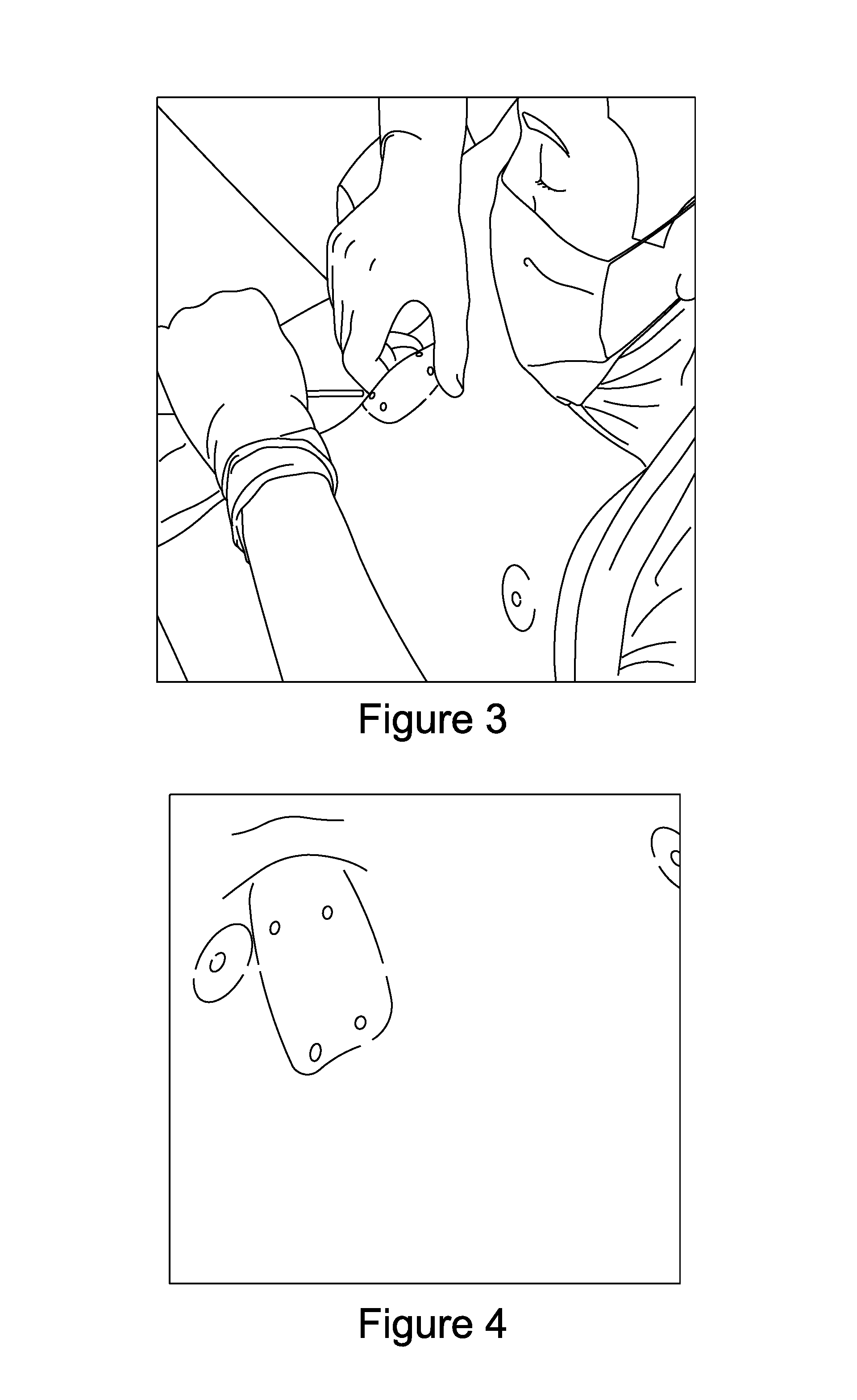Hemodialysis access system
a technology of access system and hemodialysis, which is applied in the direction of suction device, intravenous device, other medical devices, etc., can solve the problems of poor quality of life, frequent complications, and inability to accurately predict the safe values of such exposure, so as to facilitate the creation of tissue tract, facilitate patient self-access, and facilitate the effect of patient self-access
- Summary
- Abstract
- Description
- Claims
- Application Information
AI Technical Summary
Benefits of technology
Problems solved by technology
Method used
Image
Examples
Embodiment Construction
[0152]The present invention is a system comprising apparatus, compositions, and methods of use for improving performance, safety and ease of performing blood access by patients without assistance from another person.
[0153]The apparatus elements of the invention are a port with interfacial features which enable a bio-engineered tissue tract attachment; a blunt needle assembly; a factory-assembled external blood circuit; and tools to create a tissue tract. A composition comprising a gel lubricant having antimicrobial action enables large needle penetration of, and passage through, tissue. The invention also comprises methods for tissue tract formation with precise alignment to the port, and means to maintain alignment over a long period of time. Other novel methods of use include user (e.g., the patient) instillation of gels during needle withdrawal.
[0154]The gel composition protects the catheter and the tissue tract against biofilm formation, and the inherent lubrication qualities of...
PUM
 Login to View More
Login to View More Abstract
Description
Claims
Application Information
 Login to View More
Login to View More - R&D
- Intellectual Property
- Life Sciences
- Materials
- Tech Scout
- Unparalleled Data Quality
- Higher Quality Content
- 60% Fewer Hallucinations
Browse by: Latest US Patents, China's latest patents, Technical Efficacy Thesaurus, Application Domain, Technology Topic, Popular Technical Reports.
© 2025 PatSnap. All rights reserved.Legal|Privacy policy|Modern Slavery Act Transparency Statement|Sitemap|About US| Contact US: help@patsnap.com



